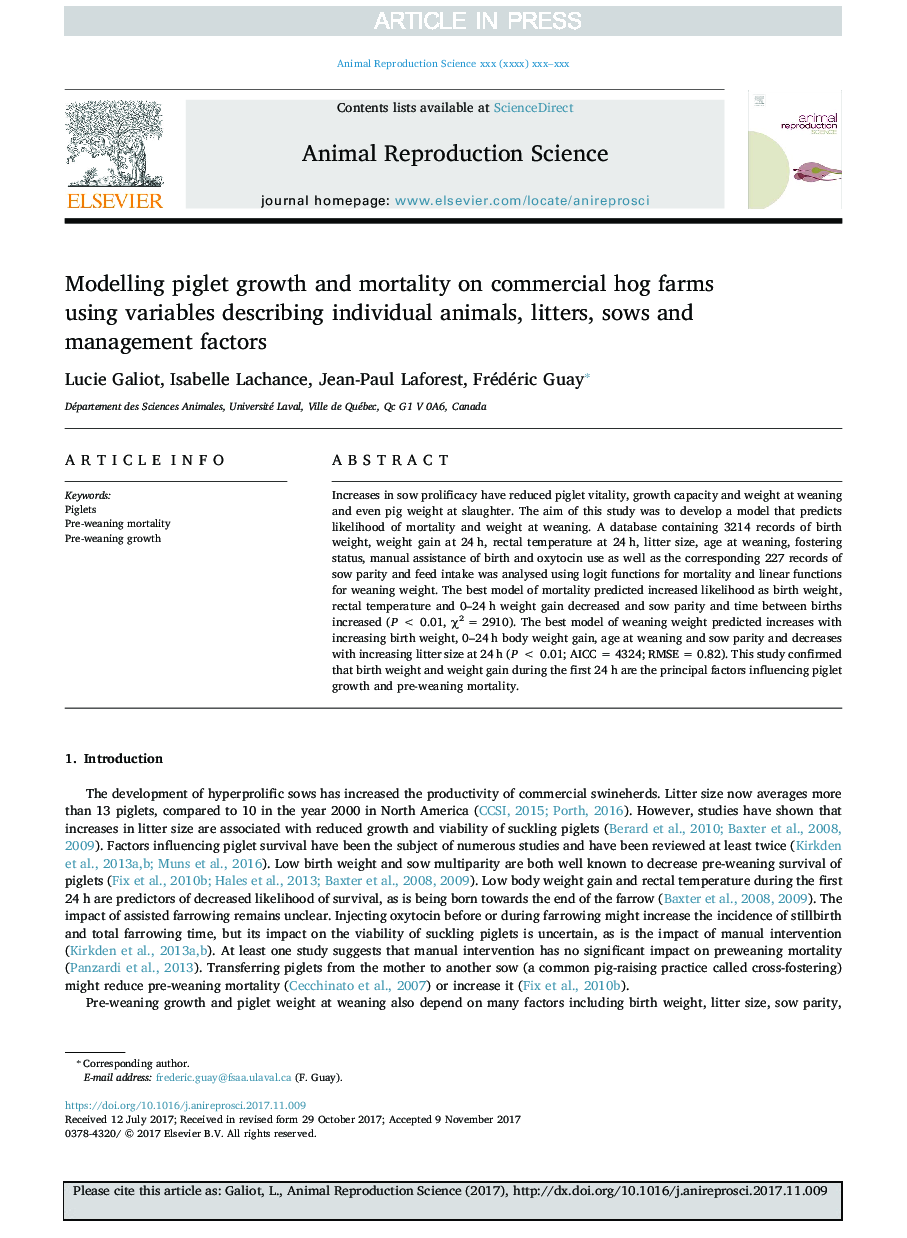| Article ID | Journal | Published Year | Pages | File Type |
|---|---|---|---|---|
| 8404074 | Animal Reproduction Science | 2018 | 9 Pages |
Abstract
Increases in sow prolificacy have reduced piglet vitality, growth capacity and weight at weaning and even pig weight at slaughter. The aim of this study was to develop a model that predicts likelihood of mortality and weight at weaning. A database containing 3214 records of birth weight, weight gain at 24Â h, rectal temperature at 24Â h, litter size, age at weaning, fostering status, manual assistance of birth and oxytocin use as well as the corresponding 227 records of sow parity and feed intake was analysed using logit functions for mortality and linear functions for weaning weight. The best model of mortality predicted increased likelihood as birth weight, rectal temperature and 0-24Â h weight gain decreased and sow parity and time between births increased (PÂ <Â 0.01, Ï2Â =Â 2910). The best model of weaning weight predicted increases with increasing birth weight, 0-24Â h body weight gain, age at weaning and sow parity and decreases with increasing litter size at 24Â h (PÂ <Â 0.01; AICCÂ =Â 4324; RMSEÂ =Â 0.82). This study confirmed that birth weight and weight gain during the first 24Â h are the principal factors influencing piglet growth and pre-weaning mortality.
Related Topics
Life Sciences
Agricultural and Biological Sciences
Animal Science and Zoology
Authors
Lucie Galiot, Isabelle Lachance, Jean-Paul Laforest, Frédéric Guay,
